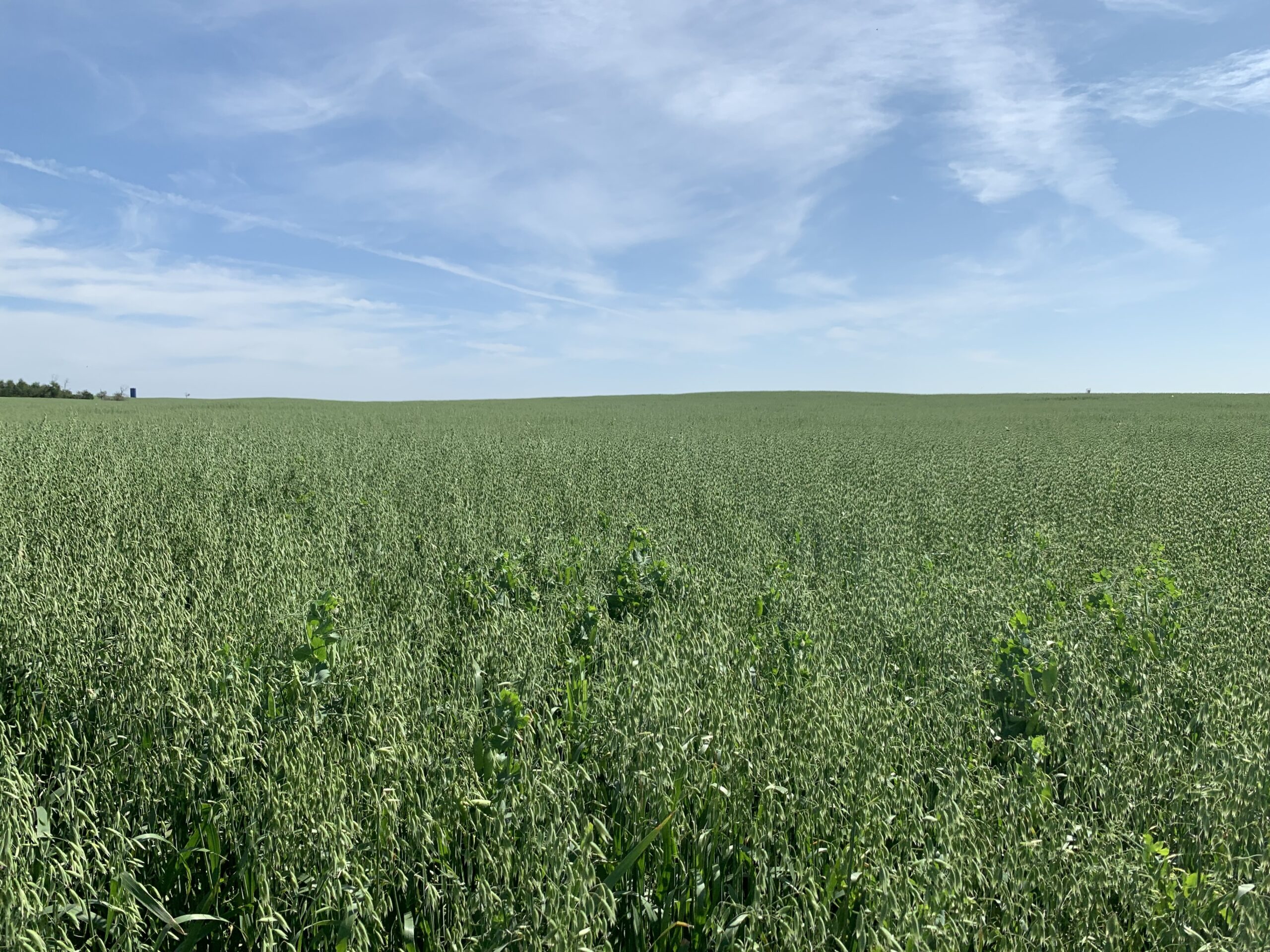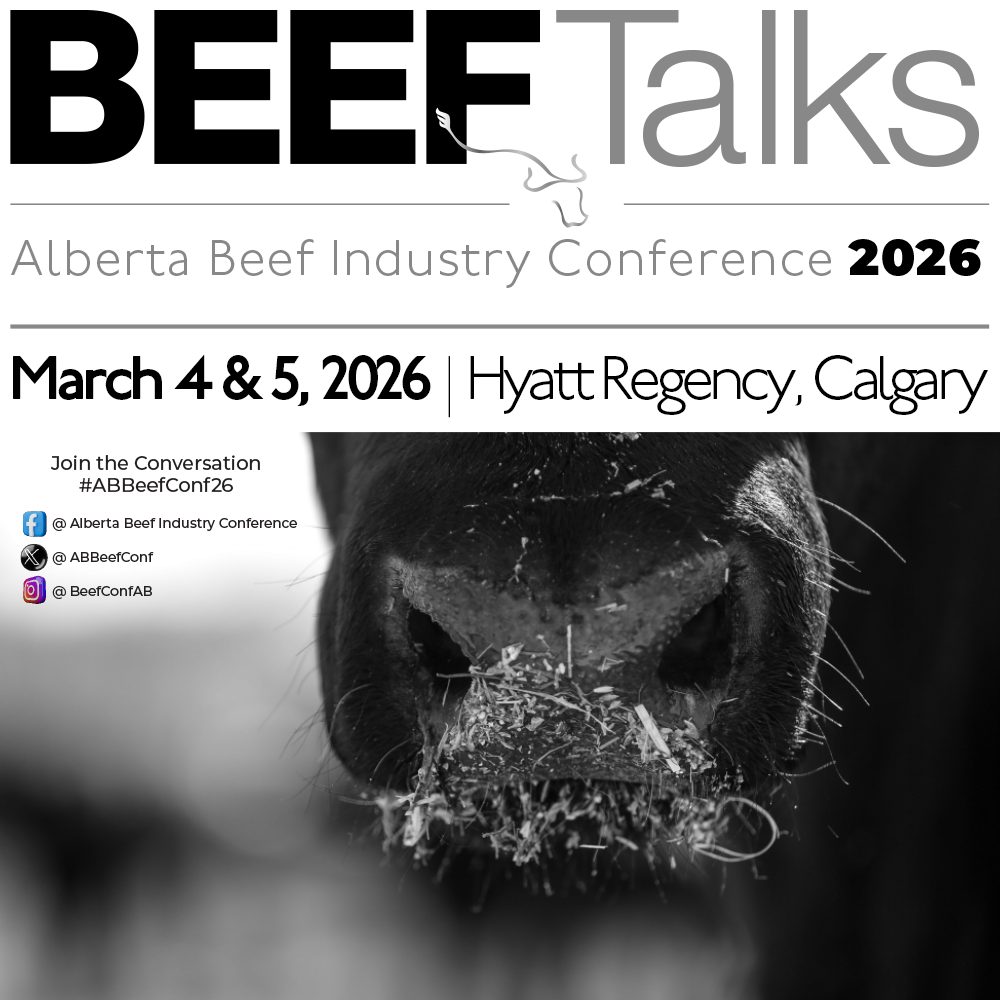AB Direct - Steers
Rail: 492.00-493.50 FOB feedlot (last week)
AB Direct - Heifers
Rail: 492.00-493.50 FOB feedlot (last week)
US Trade- Steers
Rail: 355.00-363.00 (IA, NE) last week
US Trade - Heifers
Rail: 355.00-363.00 (IA, NE) last week
Canadian Dollar
0.19

Maximizing hay quality: Strategies that hold up in any weather
As many producers across Alberta can attest this haying season, challenging weather can complicate decisions on everything from when to cut to how best to manage moisture and storage.
Whether you’ve faced heavy rain in the southwest, dry conditions in the northwest, or anything in between, the good news is there are tried-and-true strategies to help get the best results.
Breanne Sentes, consulting nutritionist with Beef Smart, shared several key tips in a recent episode of The Bovine podcast from Alberta Beef Producers. She unpacked the crucial decisions that can make or break your hay season — from optimizing cutting time to protecting forage quality in storage.
1. Identify the ‘sweet spot’
There are many factors to consider when deciding when to cut and how to get it done efficiently, says Sentes. The key is to aim for the right balance of yield and quality. “It’s all about finding that sweet spot where digestibility and tonnage intersect. But keep in mind once you’ve reached it, every day you delay cutting, you’re trading off quality for yield.”
Most producers are familiar with the graph showing where yield and quality intersect — the so-called ‘sweet spot.’ After that point, quality declines while yield increases. “Try to cut as close as you can to that intersection point,” she advises.
To fine-tune further, consider your goals for the hay crop — including the time of year and the type of cattle you’re feeding. Are you aiming for high-protein hay for young stock? Or are you more focused on dry matter to get your cows through winter? “This can help determine if you cut sooner or later.”
2. Cut for quality, not just yield
The temptation of greater yield can mean the risk to quality is too often overlooked, Sentes cautions.
For most grasses, the optimal window for cutting occurs during the boot stage. For legumes like alfalfa, aim for the bud to early bloom stage. Cutting later — for example, at 50 per cent bloom — may increase yield but at the expense of digestibility. The fibre content (NDF) rises, while energy and protein levels drop significantly. “Some of these overmature grass hays can actually test closer to straw.”
In areas where heavy rain is in the forecast, it’s better to start early. “Watch the forecast — but also be realistic about how many acres you can cover before the next rain. A good approach may be to start cutting some alfalfa in the bud stage before it begins to bloom, knowing that by the time you reach the end of your cycle, some of it will be very mature.”
3. Watch the weather — but be strategic
Sentes suggests taking an incremental approach to cutting as another way to manage risk. “Weather is rarely going to be perfect. Rather than waiting for an ideal forecast, cut in smaller, manageable sections — just enough to bale the next day.
“If you cut five days’ worth of hay and get rained on, that’s a major loss. But if you cut one day’s worth at a time, you’re spreading that risk.”
If persistent rain puts quality at risk, consider switching to silage — provided you’ve planned ahead, she notes.
4. Rake and bale at the right moisture
Raking helps speed dry down and merge windrows, but only if done at the right moisture. For grass hays, rake above 25 per cent moisture. For legumes, aim for 30–40 per cent. If hay is too dry, you’ll lose nutrient-rich leaves.
“Raking can cause 5–15 per cent dry matter loss,” says Sentes, “but that’s often worth it if it helps you avoid even greater losses from rain or spoilage.”
5. Don’t mow too low
Cutting height plays a major role in both regrowth and drying efficiency. Legumes like alfalfa regrow from root reserves, so you can cut as low as two inches — but not repeatedly. “If you always cut low and early, you’re depleting root reserves and weakening the stand over time.”
For grasses, leave more stubble. They regrow from basal tillers, and taller stubble supports faster regrowth and better photosynthesis.
Research from Missouri found that increasing cutting height from two to four inches reduced regrowth time by 24 days, while the extra yield from cutting lower was minimal, Sentes noted.
6. Manage dry down like you mean it
Once hay is cut, the race is on to preserve its quality. Key tips include conditioning or crimping stems to speed moisture loss, laying a wide swath to expose more surface area to sunlight and airflow, and raking or tedding at the right time to lift and dry bottom layers.
“Preserving quality starts the moment you cut,” says Sentes. “You can’t improve forage after the fact — you can only lose it.”
Putting experience to work
As producers accumulate years of experience navigating unpredictable weather, new strategies continue to emerge. Whether it’s adapting to less predictable rains, heavy rainfall months, or persistent drought, we’re learning it’s more important than ever to focus on nutrient retention — not just harvest logistics.


